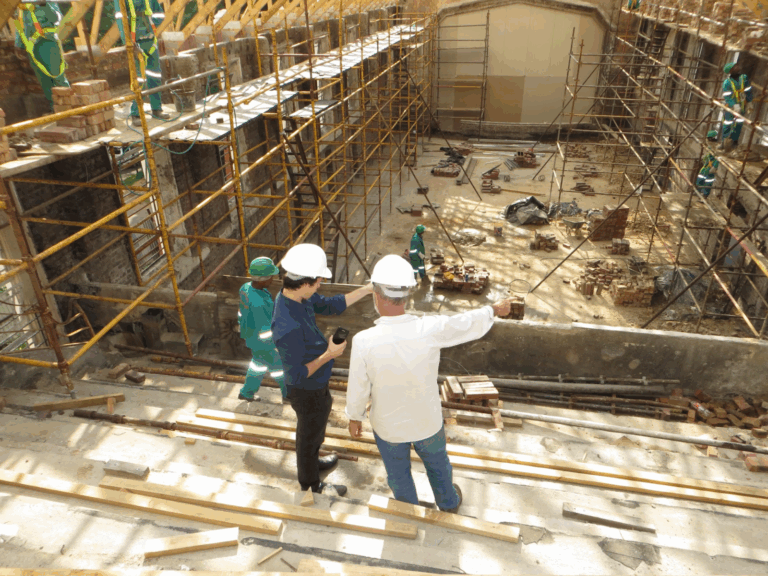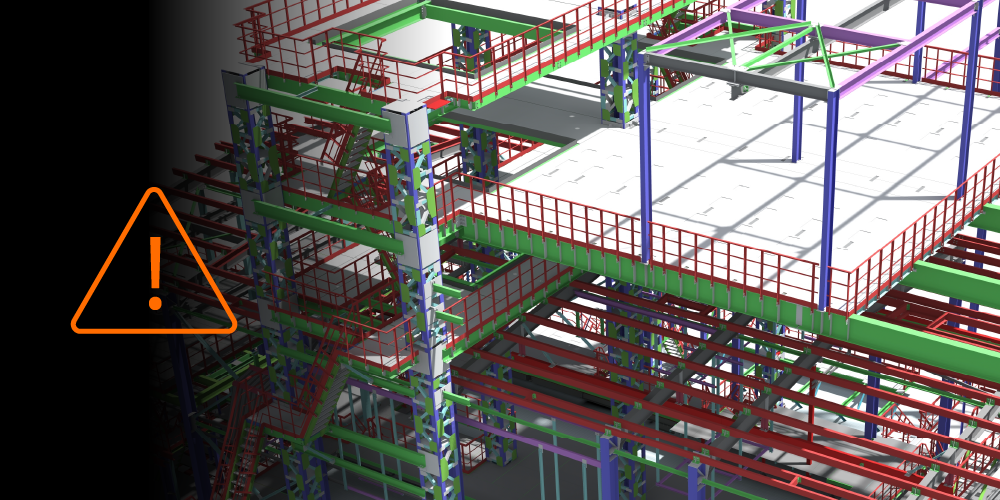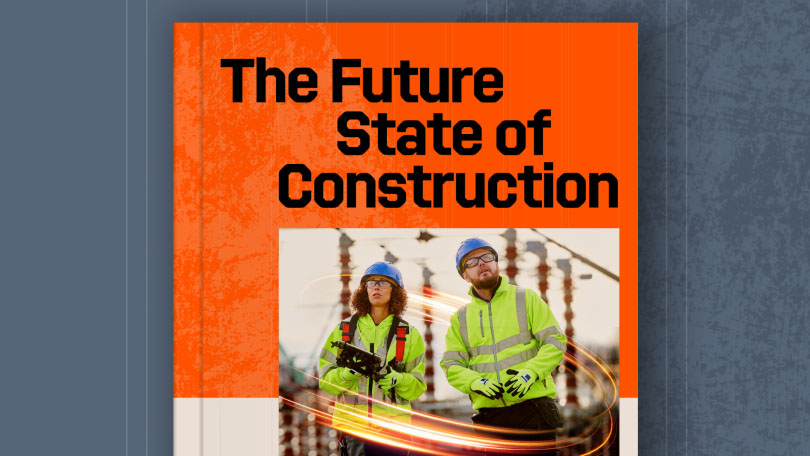Related Articles
— 7 min read
Preconstruction in Australia: Building Certainty Before Construction Begins

Last Updated Oct 21, 2025

Josh Krissansen
47 articles
Josh Krissansen is a freelance writer with two years of experience contributing to Procore's educational library. He specialises in transforming complex construction concepts into clear, actionable insights for professionals in the industry.
Last Updated Oct 21, 2025

Preconstruction in Australia is becoming the decisive factor between projects that deliver predictable margins and those that spiral into costly overruns. Before a single crew mobilises, owners, executives, and contractors face the challenge of confirming feasibility, securing approvals, refining budgets, and controlling risks that can determine success or failure.
For experienced construction leaders, preconstruction is not a checklist of technical tasks. It is the stage where scope is clarified, compliance with the National Construction Code is confirmed, and financial exposure is reduced through disciplined planning and collaboration.
This article examines the role of preconstruction in today’s Australian construction industry, outlining its key activities, exploring why it drives cost certainty and risk control, and highlighting strategies that help executives and project teams deliver projects on time, on budget, and to the required quality.
Table of contents
What is Preconstruction?
Preconstruction is the strategic planning phase where feasibility is tested, stakeholders are aligned, and cost and schedule frameworks are established to set up delivery.
During this stage, project teams:
- Translate concepts into buildable designs and budgets
- Align owners, designers, and contractors on scope, budget, and timelines
- Develop cost models and schedules that withstand delivery pressures
- Identify and mitigate risks before they escalate into disputes
This is also a critical stage for ensuring compliance with Australian codes and standards, including the National Construction Code (NCC) and state-based requirements.
Preconstruction gives teams clarity on costs, margins, timelines, and resource requirements before a project breaks ground.
Why Preconstruction Matters to Project Outcomes
Preconstruction shapes cost certainty, schedule discipline, and quality outcomes.
Surfacing and Resolving Risk
- Early preconstruction activities surface financial, design, and site risks while there is still time to resolve them.
- Cost estimation, contingencies, and cash flow forecasting strengthen financial control.
- Scheduling frameworks reduce delays and overrun.
- Design accuracy and buildability checks prevent costly rework.
Creating and Maintaining a Culture of Collaboration
- Collaboration frameworks align owners, designers, and contractors on goals and responsibilities.
- NCC and WHS compliance, including Safe Work Method Statements, is confirmed before mobilisation.
For executives and managers, effective preconstruction delivers confidence that risks are controlled, resources are aligned, and project delivery will meet contractual expectations.
Key Activities During Preconstruction
Preconstruction relies on a sequence of activities that lock in cost control, design accuracy, and regulatory compliance before work begins. We’ll look at these areas in further detail next.
Feasibility Studies and Scope Definition
- Scope definition sets clear boundaries for design, budget, and delivery
- Site investigations and zoning reviews confirm viability early, preventing redesigns and delays.
- Compliance checks against the NCC and state requirements are completed before approvals.
Design Development and Value Engineering
- Preliminary concepts are developed into detailed drawings and specifications that balance vision with buildability.
- Teams uncover, address, and resolve conflicts using Building Information Modelling (BIM), which supports clash detection and virtual assessments.
- Value engineering ensures cost-effective choices without compromising quality.
Budget and Cost Planning
- Detailed cost plans cover direct costs such as labour, materials, and equipment, as well as indirect costs such as permits, insurance, project management, and preliminaries.
- Contingencies are added to manage unforeseen conditions and cost escalation.
- Cash flow forecasts are prepared to maintain financial stability across the project lifecycle.
Scheduling and Milestones
- A master program defines construction milestones, dependencies, and critical path activities
- Look-ahead schedules provide near-term visibility, allowing managers to allocate resources effectively and minimise delays.
- Accurate sequencing at this stage avoids costly downtime during delivery.
Risk Assessment and Mitigation
- Safe Work Method Statements are prepared for high-risk activities.
- Mitigation strategies are documented in a risk register, giving project leaders visibility and accountability.
Permitting and Approvals
- Development Approvals, Construction Certificates, and all other permits are secured before mobilisation.
- Early coordination with councils and regulators ensures compliance issues are resolved before they can trigger stoppages or disputes.
Procurement and Tendering
- RFQs and RFPs are issued to secure competitive pricing and prequalify contractors.
- Capability, financial stability, and safety records are assessed to reduce disruption risk.
- Engaging contractors early also allows teams to test constructability and confirm alignment before awarding contracts.
Stakeholder Coordination
- Preconstruction brings owners, designers, contractors, and consultants together and keeps them aligned on key project parameters such as scope, timelines, and responsibilities.
- RFIs resolve ambiguities early, reducing rework and strengthening accountability..
Together, these activities create a disciplined framework that gives executives and managers confidence in cost control, scheduling accuracy, compliance, and overall project readiness.
Roles and Responsibilities in Preconstruction
Preconstruction requires multiple stakeholders working in coordination. Each role contributes specific expertise that ensures feasibility, compliance, and readiness before construction begins.
Owners and Developers
Owners and developers define project objectives, budgets, and scope in collaboration with design teams. They drive feasibility studies and financing, and issue RFQs/RFPs to secure contractors and negotiate terms that protect project margins.
Project Managers
Project managers integrate design, scheduling, and tendering activities into a single program. They ensure budgets and risk registers remain current, permits are secured, and documentation supports accurate reporting for executives.
Construction Managers
Construction managers provide constructability and sequencing input during design, ensuring delivery plans are practical. They also confirm NCC and WHS compliance before mobilisation and support contractor selection for safe, efficient execution.
Design Teams (Architects and Engineers)
Design teams translate project vision into detailed drawings and specifications. They refine designs for buildability, compliance, and efficiency, and provide discipline-specific expertise such as structural, civil, and MEP engineering. Design teams also prepare documentation for approvals and tender packages.
Head Contractors
Head contractors review project plans to identify risks such as long lead times or procurement issues. They engage subcontractors, test constructability with the design team, manage preliminaries, and prepare SWMS and the Quality Management Plan.
Quantity Surveyors and Estimators
Quantity surveyors and estimators develop accurate cost forecasts covering materials, labour, subcontractors, overhead, and contingencies. They provide financial insight to support competitive tendering and identify risks linked to escalation or resource shortages.
Subcontractors
Subcontractors provide specialist knowledge for complex systems, clarify design scope through RFIs, and prepare SWMS for their areas of high-risk work. Early involvement helps ensure accurate pricing and buildability.
Safety Managers
Safety managers integrate WHS requirements into design and buildability reviews. They conduct risk assessments, develop control measures before mobilisation, and ensure compliance is embedded in preconstruction planning.
Project Administrators and Document Controllers
Project administrators and document controllers manage contracts, drawings, and specifications. They maintain version control, track revisions, and ensure accurate information flows among stakeholders.
How to Strengthen Preconstruction for Predictable Project Execution
Stronger preconstruction comes from early involvement, disciplined processes, and continuous refinement. The following eight practices help executives and project teams reduce uncertainty and set projects up for predictable delivery.
Engage the Core Team Early
Bring the core team together before plans are locked in. Early contractor and subcontractor input tests constructibility, exposes downstream risks, and often delivers efficiencies and cost savings that are harder to capture later.
Make Documentation and Technology Central
Ambiguity in documentation drives disputes. Standardised drawings and specifications provide a single source of truth, while BIM and integrated management software keep design, budget, and schedule data aligned in one environment.
Establish Rigorous Risk Management
Risk management must begin before mobilisation. Assessments cover financial, design, site, and supply chain risks, with controls documented in SWMS and Quality Management Plans. A formal change control process prevents scope creep and unplanned costs.
Continuously Manage Budget and Value Engineering
Budgets lose relevance if not updated. Forecasting should draw on site data, benchmarks, and past performance. Regular reviews and value engineering sessions identify savings while protecting quality and compliance.
Prioritise Compliance from the Start
Compliance must be embedded from the start. Address NCC, WHS, Development Approvals, and Construction Certificates early, engaging regulators upfront to prevent stoppages. Ongoing compliance tracking ensures obligations are monitored and auditable.
Select Contractors Strategically
Contractor selection determines execution strength. Prequalification should assess history, financial stability, and safety records. Structured RFPs/RFQs ensure transparency and alignment, while early engagement tests constructibility and confirms feasibility.
Foster Transparent Communication and Collaboration
Transparent communication prevents disputes. Proactive RFIs resolve design ambiguities early, while consistent reporting on risks, budgets, and milestones gives executives the insight needed for decisive action.
Implement Continuous Review and Refinement
Preconstruction is dynamic. Schedules, budgets, and risk registers must be updated continuously. Benchmarking against past projects validates assumptions and improves forecasting accuracy across the project lifecycle.
Strong preconstruction drives predictable outcomes
Preconstruction defines scope, budget, risk, and compliance before work begins, giving leaders clarity and control. With a disciplined process, teams enter construction prepared to deliver predictable, high-quality outcomes.
Categories:
Written by

Josh Krissansen
47 articles
Josh Krissansen is a freelance writer with two years of experience contributing to Procore's educational library. He specialises in transforming complex construction concepts into clear, actionable insights for professionals in the industry.
View profileExplore more helpful resources

Managing Direct Costs in Construction: How Visibility Drives Profitability
Direct costs define the financial reality of every construction project. They cover the labour, materials, and equipment that drive delivery and determine profitability. But even the best-planned budgets can shift...

BIM Clash Detection: Reducing Rework, Delays, and Risk in Construction
Design clashes can be a significant hidden cost in construction, as each conflict between systems risks expensive rework, project delays, and reduced margins. BIM clash detection empowers teams to identify...

Next-Gen Job-Costing: Ready to Move? 5 Things to Consider Before You Get Started
In this three-part series, Quantity Surveyor turned Financial Solutions Specialist Clint Burgess uncovers the real-world gains for people, processes, and profits when businesses move from legacy to next-generation Enterprise Resource...

From Workarounds to Workflow: Solving Construction’s Legacy Job-Costing System Challenges with Next-Gen Tools
In this three-part series, Quantity Surveyor turned Financial Solutions Specialist Clint Burgess uncovers the real-world gains for people, processes, and profits when businesses move from legacy to next-generation Enterprise Resource...
